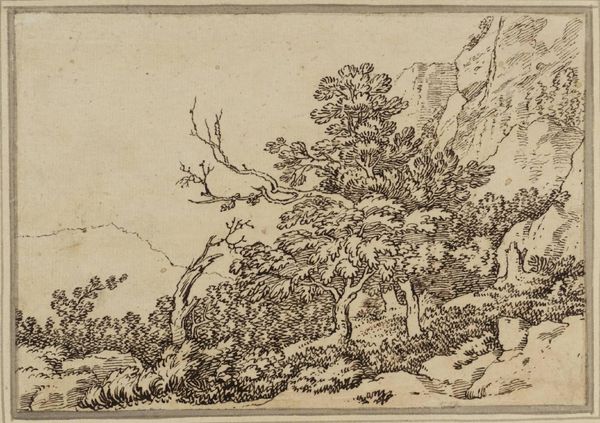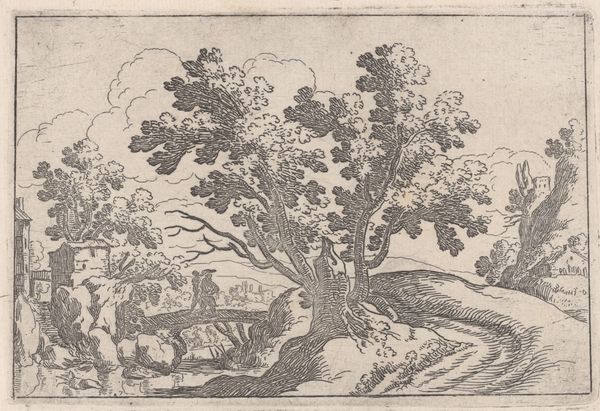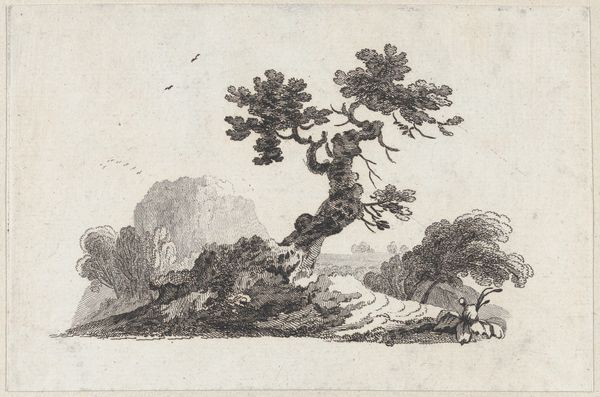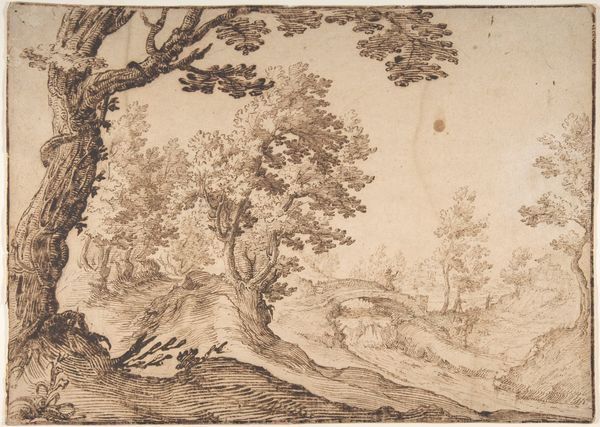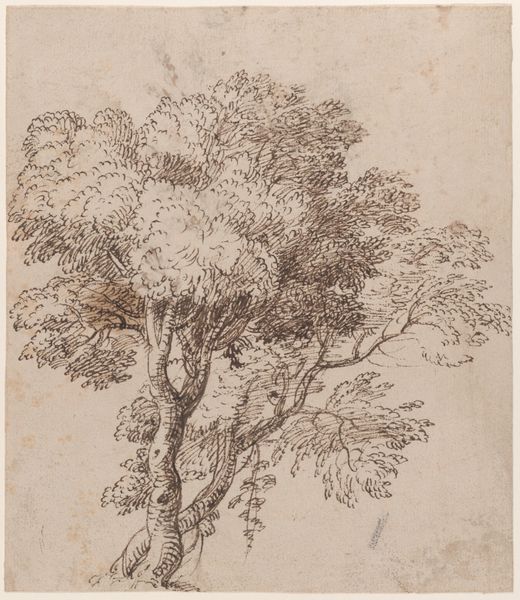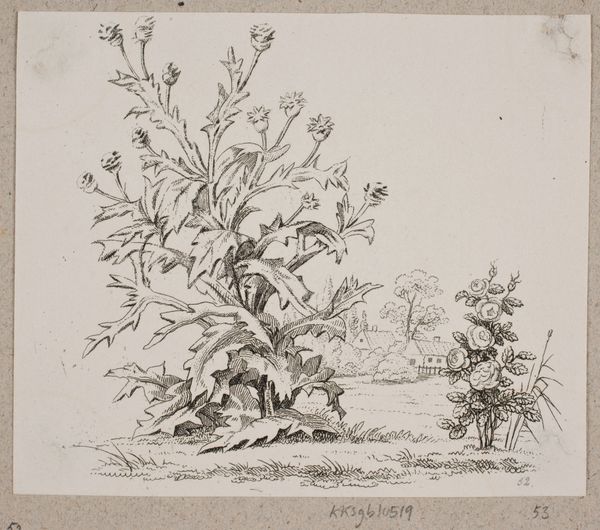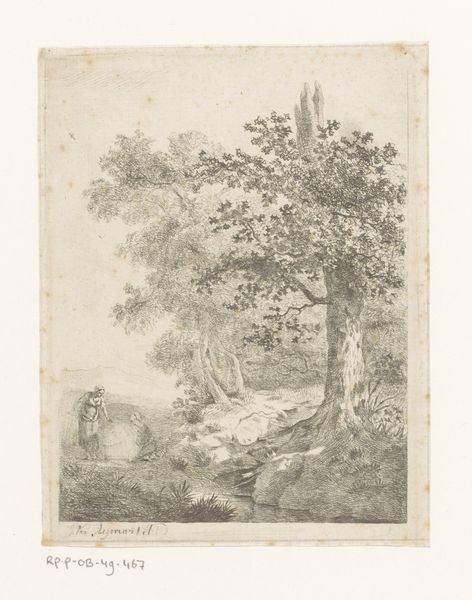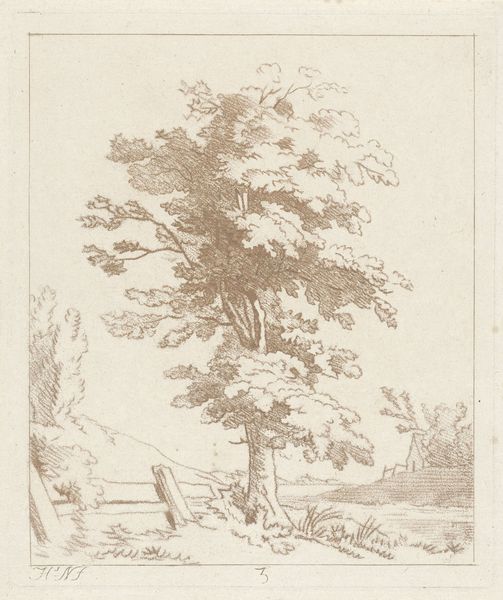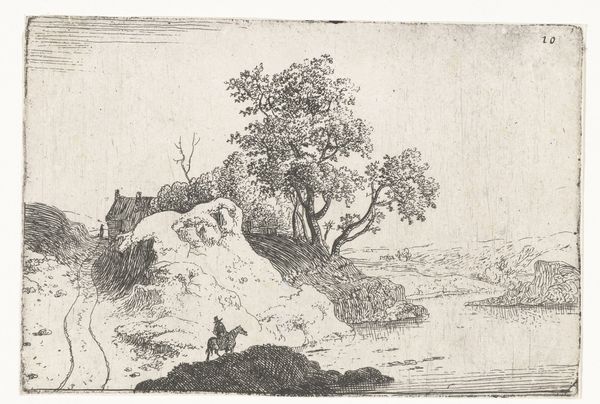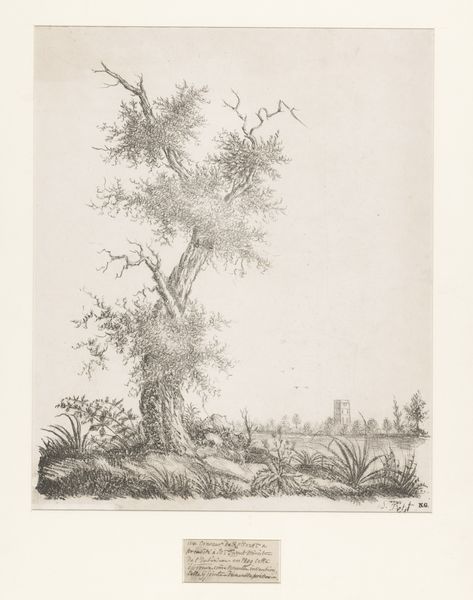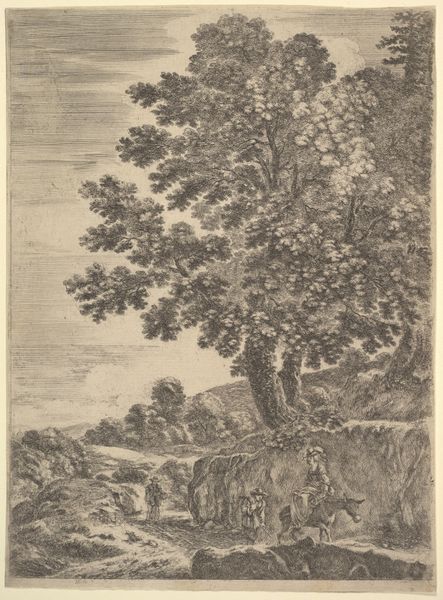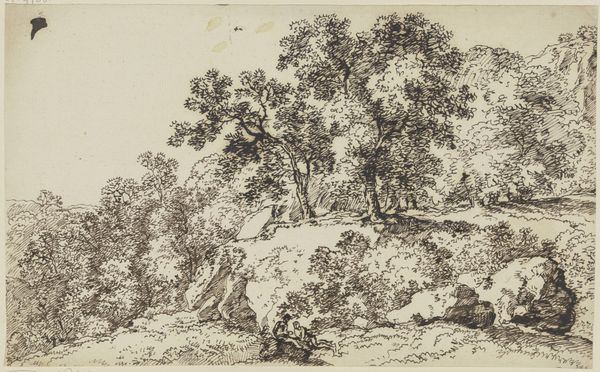
print, etching
#
toned paper
# print
#
etching
#
landscape
#
etching
#
plant
#
romanticism
#
nature
#
realism
Dimensions: height 101 mm, width 85 mm
Copyright: Rijks Museum: Open Domain
Editor: This is "Twee planten en een kikker," or "Two Plants and a Frog," an etching on toned paper from 1848 by Martinus Antonius Kuytenbrouwer Jr. The rendering is quite delicate, and has an almost dreamlike quality. What strikes you most when you look at it? Curator: What stands out is how this intimate scene operates within the Romanticism movement. While seemingly a simple depiction of nature, Kuytenbrouwer Jr. is engaging with burgeoning ideas of nationalism, of ‘returning’ to the land, or documenting local specificity against rapid urban expansion. The frog, the plants—they become emblems. How do you see the role of such intimate studies of nature in a time of social and economic change? Editor: That’s a great point, I hadn't thought of the wider implications, focusing on the details. It does highlight the beauty of these small, often overlooked, aspects of the natural world. Curator: Precisely. Consider the artist’s choice of etching, a medium accessible and reproducible, it suggests an intention to disseminate this vision of nature, to perhaps foster a sense of collective identity rooted in the land itself. How do you think the tonal quality of the print affects our perception of the scene? Editor: The toned paper softens the image and creates a subtle atmosphere, lending an air of nostalgia. It definitely emphasizes the "romantic" aspects. Curator: Indeed. It allows the artwork to function beyond a mere representation of the physical world; it touches on collective memory. Ultimately, it encourages reflection on our relationship with the environment, a relationship that is itself deeply interwoven with historical and social forces. Editor: This has completely transformed how I view the print; it's far more than just pretty plants and a frog! I see an historical and social argument now. Curator: I think we both now have new layers to consider. Let's remember that our perception of art is ever-evolving and always framed by the context of our own time.
Comments
No comments
Be the first to comment and join the conversation on the ultimate creative platform.
